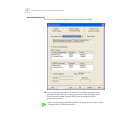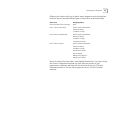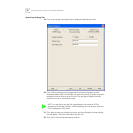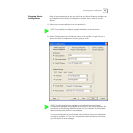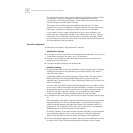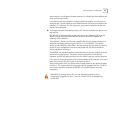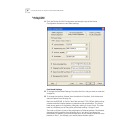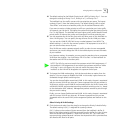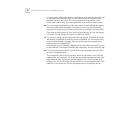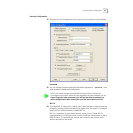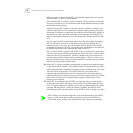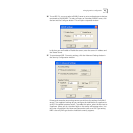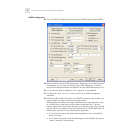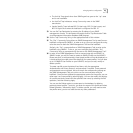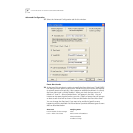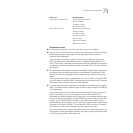
40 CHAPTER 4: USING THE CENTRAL CONFIGURATION MANAGER
In a strict priority scheme (the setting’s other option), all highest priority traffic will
be removed from the buffer. After it is removed, the next priority traffic type
would be removed, and so on. This ensures that the most important or time
critical data is passed first, but it could potentially slow traffic from other ports.
18 You can change the Outgoing (to LAN) tag scheme for the IntelliJack. By default,
frames are transmitted unmodified. This setting ensures that you will not risk
losing communication with upstream switches due to misaligned VLAN IDs (VIDs).
If you want to configure traffic from a port on the IntelliJack, you can add a tag to
the frame. This lets you separate traffic into different VLANs.
19 You can also change the Incoming (from LAN) tag scheme. By default, all frames
are received unmodified. By receiving frames unmodified, you will not risk losing
communication between upstream switches and the devices connected to the
IntelliJack due to misaligned VIDs.
If an upstream switch is sending a tagged packet but the device connected to one
of the IntelliJack ports does not need the tag information, you can remove the tag.
20 It is common practice to set the VLAN ID (VID) of the management port to VID 1,
and this is the default value.
The management port is the port through which all commands to and from the
IntelliJack are communicated. You may want to separate management traffic from
other network traffic by assigning the Management Port of the IntelliJack to a
different VID. You should make sure that the VID for the management port of the
IntelliJack is the same as the VID for management ports of upstream devices.



